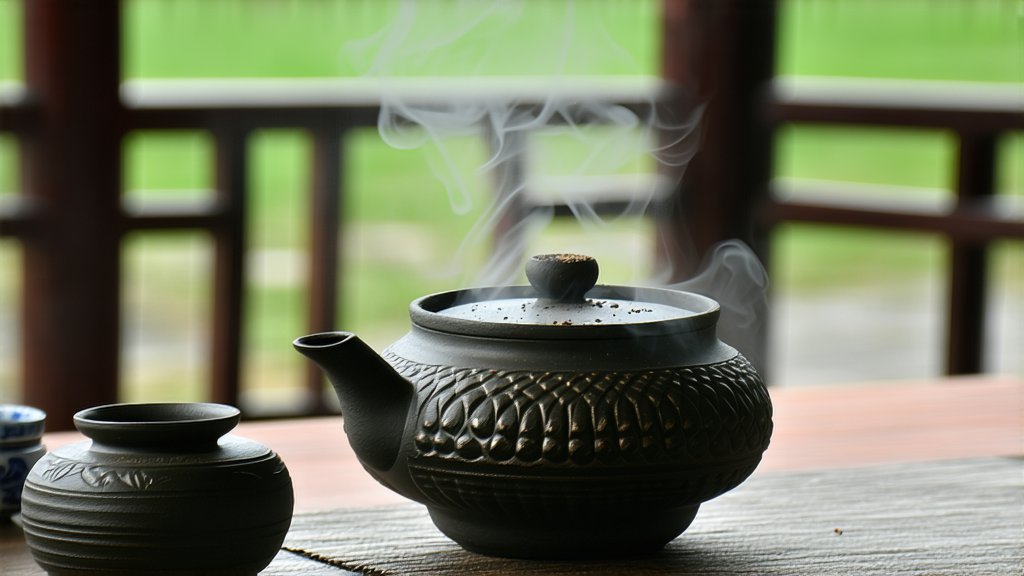
Pu-erh tea, a distinguished member of the dark tea family from China, has captivated tea enthusiasts worldwide with its unique fermentation process and rich historical background. Originating over a thousand years ago in Yunnan Province, this tea's journey through time and tradition is as complex and intriguing as its flavor profile.
Historical Background
The history of Pu-erh tea dates back to the Tang Dynasty (618–907 AD), but it gained significant prominence during the Ming Dynasty (1368–1644 AD). Initially, tea was produced in the form of sun-dried green tea leaves. However, due to the challenging logistics of transporting tea over the long trade routes, particularly the Tea Horse Road, the tea would undergo a natural fermentation and oxidation process. This transformation gave birth to what we now recognize as Pu-erh tea.
Types of Pu-erh Tea
Pu-erh tea is broadly categorized into two types: raw (Sheng) and ripe (Shou). Raw Pu-erh tea is made from sun-dried green tea leaves that are then compressed into cakes, bricks, or other shapes without further processing. It matures slowly through natural aging, developing its unique flavors over time. On the other hand, ripe Pu-erh tea undergoes a controlled fermentation process known as "wet piling" or "heap fermentation," which accelerates the aging process, resulting in a mellower flavor profile more quickly.
The Art of Fermentation
The fermentation process is central to the character of Pu-erh tea. For raw Pu-erh, this involves storing the tea in optimal conditions where it can oxidize gradually. This process can take several years, during which the tea's flavor evolves from astringent and sharp to smooth and complex. Ripe Pu-erh tea, however, undergoes a more intensive fermentation process. The leaves are piled together in a controlled environment where microbial activity breaks down the compounds within the leaves, leading to quicker maturation and a distinctive earthy taste.
Production Process
The production of Pu-erh tea involves several intricate steps:
- Picking: Only the top two or three leaves and buds are picked, ensuring high quality.
- Fixation: The freshly picked leaves are quickly fried or steamed to halt enzymatic reactions.
- Rolling and Shaping: The leaves are rolled into spirals or twisted shapes.
- Drying: The shaped leaves are dried either naturally under the sun or with the help of machines.
- Aging: For raw Pu-erh, aging occurs over many years in specific storage conditions. For ripe Pu-erh, the leaves are piled and turned regularly during the wet piling process to ensure even fermentation.
- Compressing: Finally, the tea is often compressed into cakes, bricks, or other forms for easier storage and transport.
Appreciating Pu-erh Tea
To fully appreciate Pu-erh tea, one must engage in the traditional Chinese tea ceremony. Here’s a guide to the sensory journey:
- Warm the Teapot and Cups: Pour hot water into the teapot and cups to warm them up, then discard the water.
- Add Tea Leaves: Depending on personal preference, add about 5-8 grams of Pu-erh tea per 150 ml of water.
- First Infusion: Pour hot water (around 95°C to 100°C) over the leaves and let it steep for about 10-20 seconds. Discard this infusion to "wake up" the tea.
- Subsequent Infusions: For subsequent infusions, increase steeping time gradually. Typical times range from 10 seconds for the second infusion to 30 seconds or more for later infusions.
- Observe the Liquor: Notice the color change from a light amber to a deep reddish-brown.
- Smell the Aroma: Inhale the earthy, woody aroma that becomes more pronounced with each infusion.
- Taste the Tea: Sip slowly to experience the evolving flavors—from initial bitterness to a sweet aftertaste in raw Pu-erh and a consistent mellow flavor in ripe Pu-erh.
- Feel the Texture: Pay attention to the texture and mouthfeel, which can range from smooth to slightly astringent.
Conclusion
Pu-erh tea is not just a beverage; it is an experience deeply rooted in Chinese culture and history. Its unique fermentation process, rich flavor profiles, and health benefits make it a fascinating subject for both novice and seasoned tea drinkers. Whether you prefer the robust complexity of raw Pu-erh or the smooth, aged taste of ripe Pu-erh, exploring this ancient tea offers a rewarding journey through time and tradition.